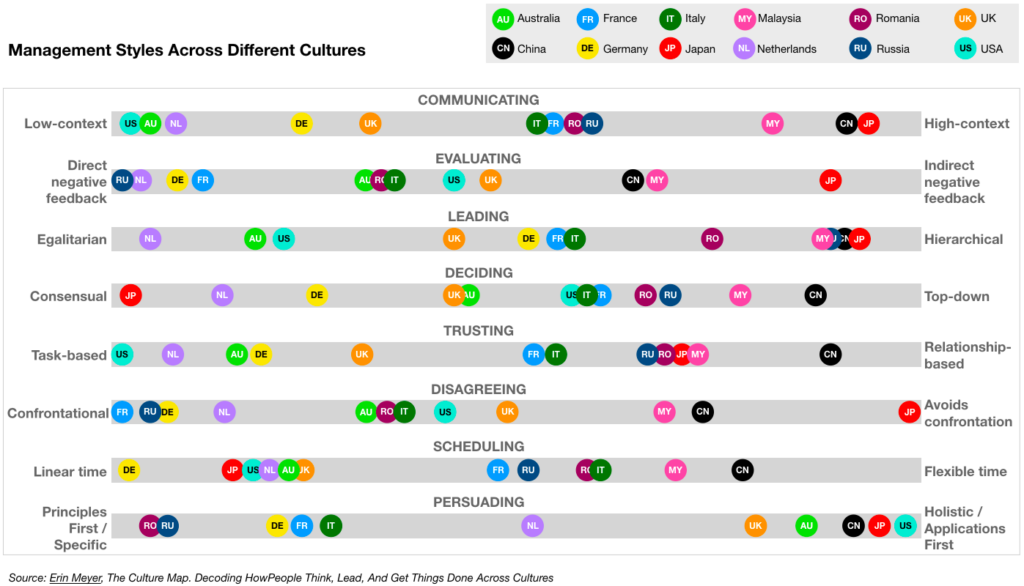Category: Influence
(46 von 100)
Why: We want to convince you about the impact of different cultures so that you can serve multi-cultural customers.
In a flash, here is how you take account of cultural differences!
Table of Contents
In Short
We will be looking at German culture in comparison to the Japanese. I recommend that you pick one country to observe at a time; the other one is the one you are familiar with.
1. What are there to be noticed?
“Styles of management” are categorized by the author Erin Meyer as follows.
- Communicating: Low-context vs. High-context
Opposite
DE = yes means yes
JP = no can also mean yes, depends - Evaluating: Direct negative feedback vs. Indirect negative feedback
Opposite
DE = your approach was bad
JP = let’s do something else - Leading: Egalitarian vs. Hierarchical
Relative close
DE = relaltive equal between position
JP = higher rank is percieve more powerful - Deciding: Consensual vs. Top-down
Relative close
DE = take decision with voting in a circle of management
JP = higher rank takes decision - Trusting: Task-based vs. Relationship-based
Opposite
DE = experts are trusted
JP = considering relationship - Disagreeing: Confrontational vs. Avoids confrontation
Opposite
DE = debating always
JP = never debate - Scheduling: Linear time vs. Flexible time
Same
DE = extremely concious
JP = also consious - Persuading: Principles first vs. Holistic/Applications first
Opposite
DE = check the rules first
JP = check the application first

2. Account for differences
We would like to put the lens on differences between two cultures and see which are to be accounted for to build a new cross-cultural shop. In this case, from the Japanese market to the German market.
The differences and adjustments are
- Communicating: conveying in 4W2H format = What Who Where When How How much
- Trusting: approach target business partners with task description
- Persuading: make a clear cut comparison of specifications
3. Adaptation – the name of the game
How well you can adapt your strategy to the target market is the key to gaining advantages over other foreign entries.
This usually means a ton of customer research, face-to-face, to understand the subtleties of the cultural differences and utilize it for more beneficial relationships.

Conclusion
We have looked into the values in culture and how different they can be. However, most of them are not obvious and represent a norm of the country.
Meaning, if your e-commerce product focuses on a specific type of user, you should prioritize that! However, we can use this overview comparison to answer the question of “How much to adapt?”
Now, go out there, study the difference, and adapt!
Reading material: goodreads.com-the-culture-map

